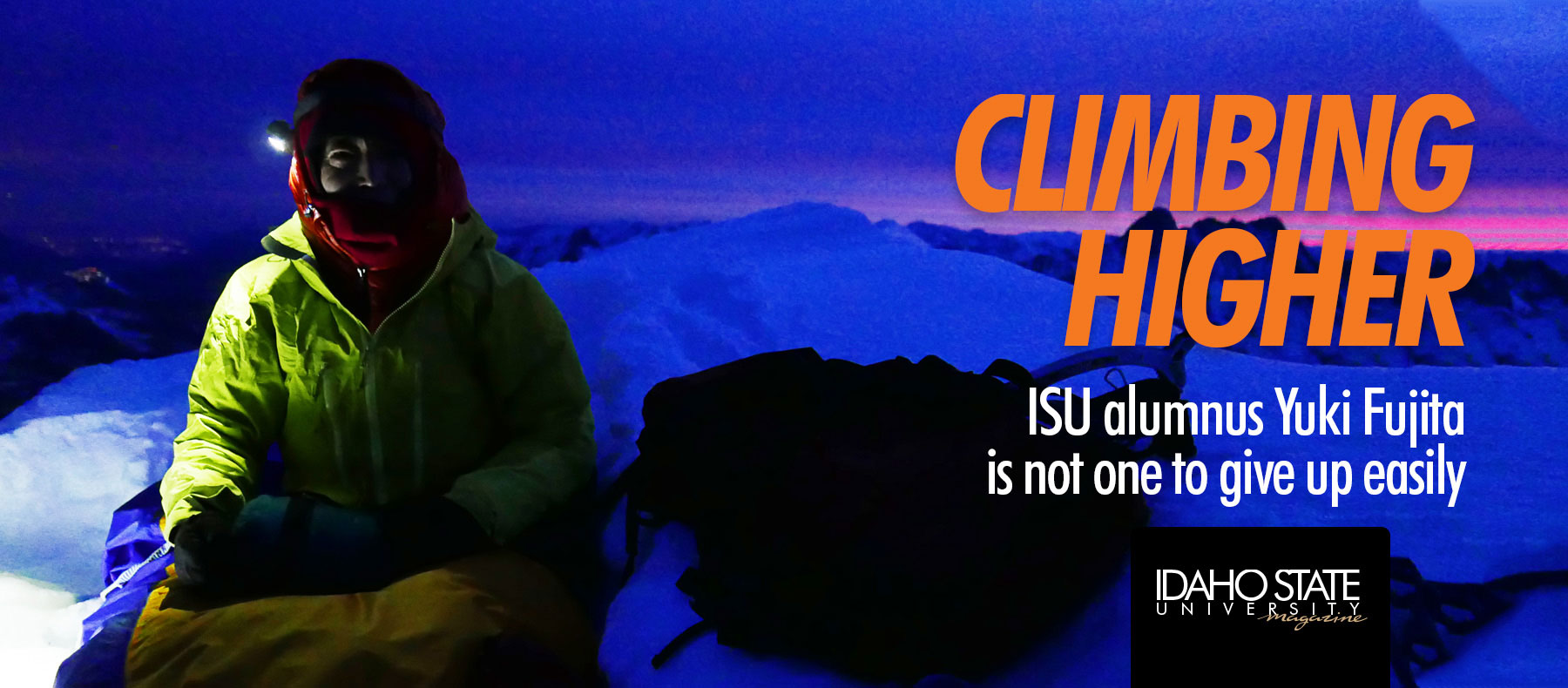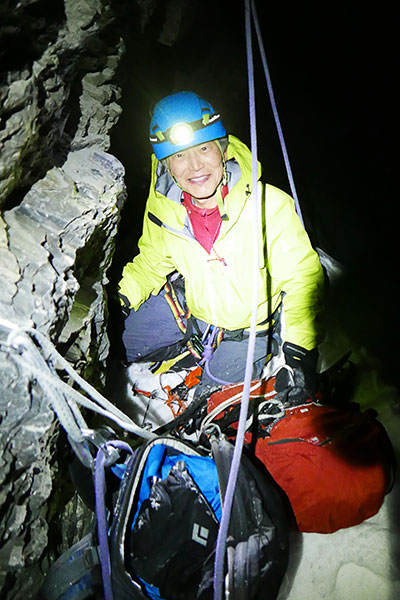
Every spring, since 2011, Fujita, a lifelong climber, has made plans to climb the Eiger North Face, one of the three great north faces in the Alps, and arguably the most challenging. He had climbed the other challenging face, the Grandes Jorasses. The Eiger, however, had been a dream 50 years in the making.
Fujita began climbing at home in Japan when he was in high school, and was hooked. When he arrived at Idaho State University for graduate school, he soon found friends in Bill March and Ron Watters at the ISU Outdoor Education Center, and spent time as a student assistant, helping to teach mountaineering safety. He listened to March’s stories about the Alps, and learned new techniques for high-altitude climbs. He says he knew he would need the information later.
“There’s so many things to climb,” Fujita said. “Eiger is the one that drew my eyes, always.”
Nearly every year, however, something stopped him. The first year, he was stopped by a broken femur from a bicycling accident. Weather stopped him on other planned occasions — on one particularly devastating trip, Fujita received notice he was being laid off from his job just before getting on a plane to the Alps. Although he quickly was rehired in another position, his lifelong dream had to wait. Eventually, Fujita’s climbing partner of 20 years decided against climbing the Eiger and his wife was too nervous about his safety. It took Fujita a year to find another partner.
He met his new partner, Jonathan Bracey, a mountain guide who lives in Chamonix, France, in 2014. They made plans for 2015, but again the weather proved to be too much. In 2016, they climbed together for the first time, and Fujita was thrilled that his age (68) did not deter him.
After more failed attempts, Fujita, at the age of 71, finally got his chance to summit the Eiger. After 12 hours of climbing, on Halloween night 2017, he found himself sleeping at “Death Bivouac” in a pack tied to a ledge not any wider or longer than a couch, thousands of feet above civilization.
“Fortunately, I didn’t think of the spookiness of Halloween nor of the two climbers who died on this ledge in earlier attempts,” Fujita said. “Just don’t roll over.”
The first day of climbing, Fujita felt good, despite the fact that he had not yet acclimated fully to the elevation. By the second day, however, he could not catch his breath. He was hurting, and asked his partner if they could stop for the night. With the help of his partner, however, he pushed on, and the two made the summit by headlamp.
“I didn’t feel any accomplishment at all,” he said. “I was so tired.”
It wasn’t until he looked out, with clear skies, the next morning, that he realized the beauty of where he was. And it took even longer to realize his accomplishment.
“I didn’t really get a grasp of my excitement until a month later,” he said.
Today, Fujita still has many mountains to climb. He hopes to climb the third north face, the Matterhorn, before he “gets too old.”
“I have a lot of unfinished climbing,” he said. “I wouldn’t mind going up Eiger again.”


